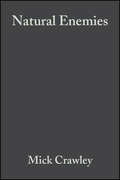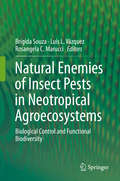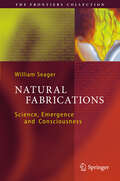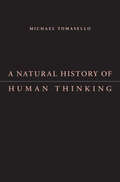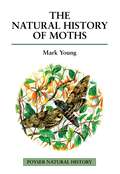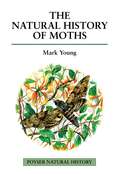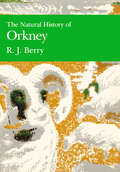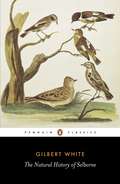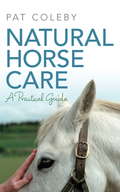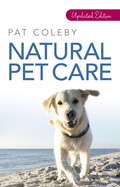- Table View
- List View
Natural Enemies: The Population Biology of Predators, Parasites and Diseases
by Michael J. CrawleyThis book is about disease and death. It is an ecologist's view of Darwin's vivid evocation of Nature, red in tooth and claw. An international team of authors examines broad patterns in the population biology of natural enemies, and addresses general questions about the role of natural enemies in the population dynamics and evolution of their prey. For instance, how do large natural enemies like wolves differ from small natural enemies like bacterial diseases in their effects on prey abundance? Is it better to chase after prey, or sit and wait for it to come to you? How should prey behave in order to minimize the risk of being eaten? The answers are all in this fascinating senior undergraduate/postgraduate text.
Natural Enemies of Insect Pests in Neotropical Agroecosystems: Biological Control and Functional Biodiversity
by Brígida Souza Luis L. Vázquez Rosangela C. MarucciThis book aims to address the importance of natural enemies and functional diversity for biological control in Neotropical agroecosystems. Several aspects related to the conservation of natural enemies, such as vegetation design and climate change, are discussed in Part 1 and the bioecology of several insects groups used in biological control in Latin America is presented in Part 2. Part 3 is devoted to mass production of natural enemies while Part 4 describes how these insects have been used to control of pests in major crops, forests, pasture, weeds and plant diseases. Lastly, Part 5 reports Latin-American experiences of integration of biological in pest management programs.
Natural Fabrications: Science, Emergence and Consciousness (The Frontiers Collection)
by William SeagerThe spectacular success of the scientific enterprise over the last four hundred years has led to the promise of an all encompassing vision of the natural world. In this elegant picture, everything we observe is based upon just a few fundamental processes and entities. The almost infinite variety and complexity of the world is thus the product of emergence. But the concept of emergence is fraught with controversy and confusion. This book ponders the question of how emergence should be understood within the scientific picture, and whether a complete vision of the world can be attained that includes consciousness.
The Natural Health Service: What the Great Outdoors Can Do for Your Mind
by Isabel Hardman'Brilliant' -- Matt HaigIn 2016, Isabel Hardman's mind, in her own words, 'stopped working' as she fell prey to severe depression and anxiety. She took time off on long-term sick leave and despite several relapses has returned to work with a much improved ability to cope. She has since become one of the UK's most prominent public voices on mental health.She credits her better health to her passion for exercise, nature and the great outdoors - from horse-riding and botany to cold-water swimming and running. In The Natural Health Service, she draws on her own personal experience, interviews with mental illness sufferers and psychologists, and the latest research to examine what role wildlife and exercise can play in helping anyone cope with mental illness. Straight-talking, thoroughly-researched, and compassionate, this important and often funny book will fascinate anyone touched by a mental health condition, whether themselves or through the experiences of a loved-one.
Natural History in the Highlands and Islands (Collins New Naturalist Library #6)
by F. Fraser DarlingThe Highlands and Islands of Scotland are rugged moorland, alpine mountains and jagged coast with remarkable natural history. This edition is exclusive to newnaturalists.com
A Natural History of Families
by Scott ForbesWhy do baby sharks, hyenas, and pelicans kill their siblings? Why do beetles and mice commit infanticide? Why are twins and birth defects more common in older human mothers? A Natural History of Families concisely examines what behavioral ecologists have discovered about family dynamics and what these insights might tell us about human biology and behavior. Scott Forbes's engaging account describes an uneasy union among family members in which rivalry for resources often has dramatic and even fatal consequences. In nature, parents invest resources and control the allocation of resources among their offspring to perpetuate their genetic lineage. Those families sometimes function as cooperative units, the nepotistic and loving havens we choose to identify with. In the natural world, however, dysfunctional familial behavior is disarmingly commonplace. While explaining why infanticide, fratricide, and other seemingly antisocial behaviors are necessary, Forbes also uncovers several surprising applications to humans. Here the conflict begins in the moments following conception as embryos struggle to wrest control of pregnancy from the mother, and to wring more nourishment from her than she can spare, thus triggering morning sickness, diabetes, and high blood pressure. Mothers, in return, often spontaneously abort embryos with severe genetic defects, allowing for prenatal quality control of offspring. Using a broad sweep of entertaining examples culled from the world of animals and humans, A Natural History of Families is a lively introduction to the behavioral ecology of the family.
A Natural History of Families (PDF)
by Scott ForbesWhy do baby sharks, hyenas, and pelicans kill their siblings? Why do beetles and mice commit infanticide? Why are twins and birth defects more common in older human mothers? A Natural History of Families concisely examines what behavioral ecologists have discovered about family dynamics and what these insights might tell us about human biology and behavior. Scott Forbes's engaging account describes an uneasy union among family members in which rivalry for resources often has dramatic and even fatal consequences. In nature, parents invest resources and control the allocation of resources among their offspring to perpetuate their genetic lineage. Those families sometimes function as cooperative units, the nepotistic and loving havens we choose to identify with. In the natural world, however, dysfunctional familial behavior is disarmingly commonplace. While explaining why infanticide, fratricide, and other seemingly antisocial behaviors are necessary, Forbes also uncovers several surprising applications to humans. Here the conflict begins in the moments following conception as embryos struggle to wrest control of pregnancy from the mother, and to wring more nourishment from her than she can spare, thus triggering morning sickness, diabetes, and high blood pressure. Mothers, in return, often spontaneously abort embryos with severe genetic defects, allowing for prenatal quality control of offspring. Using a broad sweep of entertaining examples culled from the world of animals and humans, A Natural History of Families is a lively introduction to the behavioral ecology of the family.
A Natural History of Human Thinking
by Michael TomaselloTool-making or culture, language or religious belief: ever since Darwin, thinkers have struggled to identify what fundamentally differentiates human beings from other animals. Michael Tomasello weaves his twenty years of comparative studies of humans and great apes into a compelling argument that cooperative social interaction is the key to our cognitive uniqueness. Tomasello maintains that our prehuman ancestors, like today's great apes, were social beings who could solve problems by thinking. But they were almost entirely competitive, aiming only at their individual goals. As ecological changes forced them into more cooperative living arrangements, early humans had to coordinate their actions and communicate their thoughts with collaborative partners. Tomasello's "shared intentionality hypothesis" captures how these more socially complex forms of life led to more conceptually complex forms of thinking. In order to survive, humans had to learn to see the world from multiple social perspectives, to draw socially recursive inferences, and to monitor their own thinking via the normative standards of the group. Even language and culture arose from the preexisting need to work together and coordinate thoughts. A Natural History of Human Thinking is the most detailed scientific analysis to date of the connection between human sociality and cognition.
A Natural History of Human Thinking
by Michael TomaselloTool-making or culture, language or religious belief: ever since Darwin, thinkers have struggled to identify what fundamentally differentiates human beings from other animals. Michael Tomasello weaves his twenty years of comparative studies of humans and great apes into a compelling argument that cooperative social interaction is the key to our cognitive uniqueness. Tomasello maintains that our prehuman ancestors, like today's great apes, were social beings who could solve problems by thinking. But they were almost entirely competitive, aiming only at their individual goals. As ecological changes forced them into more cooperative living arrangements, early humans had to coordinate their actions and communicate their thoughts with collaborative partners. Tomasello's "shared intentionality hypothesis" captures how these more socially complex forms of life led to more conceptually complex forms of thinking. In order to survive, humans had to learn to see the world from multiple social perspectives, to draw socially recursive inferences, and to monitor their own thinking via the normative standards of the group. Even language and culture arose from the preexisting need to work together and coordinate thoughts. A Natural History of Human Thinking is the most detailed scientific analysis to date of the connection between human sociality and cognition.
A Natural History of Human Thinking
by Michael TomaselloTool-making or culture, language or religious belief: ever since Darwin, thinkers have struggled to identify what fundamentally differentiates human beings from other animals. Michael Tomasello weaves his twenty years of comparative studies of humans and great apes into a compelling argument that cooperative social interaction is the key to our cognitive uniqueness. Tomasello maintains that our prehuman ancestors, like today's great apes, were social beings who could solve problems by thinking. But they were almost entirely competitive, aiming only at their individual goals. As ecological changes forced them into more cooperative living arrangements, early humans had to coordinate their actions and communicate their thoughts with collaborative partners. Tomasello's "shared intentionality hypothesis" captures how these more socially complex forms of life led to more conceptually complex forms of thinking. In order to survive, humans had to learn to see the world from multiple social perspectives, to draw socially recursive inferences, and to monitor their own thinking via the normative standards of the group. Even language and culture arose from the preexisting need to work together and coordinate thoughts. A Natural History of Human Thinking is the most detailed scientific analysis to date of the connection between human sociality and cognition.
The Natural History of Moths (Poyser Natural History)
by Mark YoungUniting the results of amateur study with the latest scientific research to paint a broad picture of all aspects of moth biology and ecology, this text uses many examples from the moth faunas of Britain and Europe to shed light on what is largely a neglected group. The breeding, feeding, distribution and life-history and ecology of moths are described as well as the more specialized aspects of their behaviour. Their interactions with host plants, their anti-predator responses, and the threats arising from the degradation of natural habitats are also all explored in this illustrated text.
The Natural History of Moths (Poyser Natural History)
by Mark Young Lyn WellsUniting the results of amateur study with the latest scientific research to paint a broad picture of all aspects of moth biology and ecology, this text uses many examples from the moth faunas of Britain and Europe to shed light on what is largely a neglected group. The breeding, feeding, distribution and life-history and ecology of moths are described as well as the more specialized aspects of their behaviour. Their interactions with host plants, their anti-predator responses, and the threats arising from the degradation of natural habitats are also all explored in this illustrated text.
The Natural History of Orkney (Collins New Naturalist Library #70)
by R. J. BerryThis is the first survey of the islands' natural history, complete in one volume. Because Orkney is exceptional, it is vital reading for the serious naturalist, as well as for being a comprehensive and absorbing guide for every visitor. This edition is exclusive to newnaturalists.com
The Natural History of Rabies
by George M. BaerThis book provides essential worldwide reference information regarding rabies for public health officials, veterinarians, physicians, virologists, epidemiologists, infectious disease specialists, laboratory diagnosticians, and wildlife biologists. The book is divided into six main sections, covering topics such as the rabies virus, including antigenic and biochemical characteristics; pathogenesis, including the immune response to the infection, pathology, and latency; diagnostic techniques; rabies epidemiology in a variety of wild and domestic animals; rabies control, including vaccination of wild and domestic animals, as well as control on the international level; and finally a discussion of rabies in humans, local wound and serum treatment, and human post-exposure vaccination. Natural History of Rabies, First Edition has been the principal worldwide reference since 1975. The new Second Edition has been completely updated, providing current information on this historically deadly disease.
The Natural History of Rabies: Volume Ii
by George M. BaerThis book provides essential worldwide reference information regarding rabies for public health officials, veterinarians, physicians, virologists, epidemiologists, infectious disease specialists, laboratory diagnosticians, and wildlife biologists. The book is divided into six main sections, covering topics such as the rabies virus, including antigenic and biochemical characteristics; pathogenesis, including the immune response to the infection, pathology, and latency; diagnostic techniques; rabies epidemiology in a variety of wild and domestic animals; rabies control, including vaccination of wild and domestic animals, as well as control on the international level; and finally a discussion of rabies in humans, local wound and serum treatment, and human post-exposure vaccination. Natural History of Rabies, First Edition has been the principal worldwide reference since 1975. The new Second Edition has been completely updated, providing current information on this historically deadly disease.
The Natural History of Selborne: Observations On Various Parts Of Nature
by Gilbert White Richard MabeyMore than any other writer Gilbert White (1720-93) has shaped the relationship between man and nature. A hundred years before Darwin, White realised the crucial role of worms in the formation of soil and understood the significance of territory and song in birds. His precise, scrupulously honest and unaffectedly witty observations led him to interpret animals' behaviour in a unique manner. This collection of his letters to the explorer and naturalist Daines Barrington and the eminent zoologist Thomas Pennant - White's intellectual lifelines from his country-village home - are a beautifully written, detailed evocation of the lives of the flora and fauna of eighteenth-century England.
The Natural History of The Bahamas: A Field Guide
by Dave Currie Joseph M. Wunderle Jr. Ethan Freid David N. Ewert D. Jean LodgeTake this book with you on your next trip to the Bahamas or the Turks and Caicos Islands or keep it close to hand in your travel library. The Natural History of the Bahamas offers the most comprehensive coverage of the terrestrial and coastal flora and fauna on the islands of the Bahamas archipelago, as well as of the region's natural history and ecology. Readers will gain an appreciation for the importance of conserving the diverse lifeforms on these special Caribbean islands. A detailed introduction to the history, geology, and climate of the islands. Beautifully illustrated, with more than seven hundred color photographs showcasing the diverse plants, fungi, and animals found on the Bahamian Archipelago.
A Natural History of the Emirates
by John A. BurtFor many people, thoughts of the United Arab Emirates conjure images of ultramodern skyscrapers and rolling sand dunes. However, the Emirates are a rich mosaic of ecosystems and habitats that support surprisingly diverse communities of organisms, and there is growing awareness of the importance of these previously underappreciated natural assets. A Natural History of the Emirates provides a comprehensive overview of the unusual environmental setting of this young nation, and surveys the major ecosystems and the marine and terrestrial organisms occurring across the nation. From freshwater streams in the hyperarid Hajar Mountains to the world’s most temperature-tolerant coral reefs, the UAE is home to an astounding variety of uniquely adapted organisms that are providing insights into climate change and how organisms cope with and respond to extreme environmental conditions. The book closes with a section on human interactions with this unique environment, and proposes initiatives to ensure the protection of these unique natural assets into the future. This is an open access book.
Natural History of Vampire Bats
by Arthur M. GreenhallA major problem with vampire bats is that whatever information exists is scattered throughout the literature or is not recorded. There are some excellent books on the ecology and biology of bats with very little on vampire bats. This volume fills that gap to provide an in-depth presentation of these unique animals.
Natural History of Vampire Bats
by Arthur M. GreenhallA major problem with vampire bats is that whatever information exists is scattered throughout the literature or is not recorded. There are some excellent books on the ecology and biology of bats with very little on vampire bats. This volume fills that gap to provide an in-depth presentation of these unique animals.
The Natural History of Weasels and Stoats: Ecology, Behavior, and Management
by Carolyn M. King Roger A. PowellField naturalists have observed the activities of weasels for centuries. Their descriptions were often accurate but sometimes misinterpreted the animals' behaviors and underlying explanations for those behaviors. "Organized natural history" became one of the roots of the science of ecology in the 1920s and by the 1960s scientists had begun to study the biology of weasels with all the critical, objective advantages of modern theory and equipment. Until the first edition of this book appeared in 1989 no one had attempted to explain these results to non-specialist naturalists. Now thoroughly revised, this book will continue to be the main one-stop reference for professionals. But both kinds of knowledge are brought together here-- observations for the traditional naturalist and rigorous measurements and interpretations for modern scientists, integrated into a single, readable account. This new edition provides a comprehensive summary of the extensive advances over the last 15 years in our knowledge of these fascinating animals. A new U.S.-based co-author reshapes the content to be more U.S.-centric. Stories about North America trappers and backwoodsmen interacting with weasels replace some (not all) of the previous stories about English gamekeepers. These changes permeate the book, so readers familiar with the first edition will recognize some material, but will find a lot that is new. Much less reliable European information quoted in the first edition was there at the time when no better information was available. Now a new NZ chapter focuses on predation problems of the species introduced to that country. This edition, much more than a simple update, is now truly an international treatment and a more valuable resource.
Natural Horse Care: A Practical Guide
by Pat ColebyThis practical and definitive guide explains how to keep horses in excellent health the natural way.The vital roles of correct feed rations, vitamins and minerals in the health of a horse are fully explained; and practical guidance is given on topics such as selecting the right food, treating ailments with natural remedies, dealing with recovery from injury, and combating equine flu.Trainers, breeders and horsekeepers of all kinds will benefit enormously from Pat Coleby's many years of experience working with horses in the UK and Australia. She is a qualified vet, and also the author NATURAL PET CARE.
Natural Materials and Products from Insects: Chemistry and Applications
by Dhiraj Kumar Mohammad ShahidThis book reviews the latest research on bioproducts from various economically important insects, such as silkworms, honey bees, lac and drosophila, and termites, and discusses their general, biomedical and industrial applications in detail. It includes chapters focusing on insects as a food source, probiotics, silk-based biomaterials, insect pheromones, insects as biomedicine source, pupa oil chemistry, non-protein compounds from Lepidopteran insects, insect chitin and chitosan, polyphenols and flavonoids.Model insects like Bombyx mori or bees were domesticated in Asian countries thousands of years ago. Over time, natural products from these animals became industrialized and today they attracting increasing attention thanks to their sustainability and their manifold applications in agriculture and biomedicine. The book is intended for entomologists, material scientists, natural product researchers and biotechnologists.
Natural Mycotoxin Contamination in Humans and Animals
by Martin WeidenbörnerThis book presents a review of the existing literature on natural mycotoxins to create a comprehensive reference for mycotoxin levels. Each entry includes contamination, concentration rate, mostly mean mycotoxin concentration of organs (human and animal) and country of origin of the sample. Due to the serious spoilage and health issues the presence of mycotoxins can cause, it is imperative that corresponding scientists, health institutions and the food and feed industries have a more qualified understanding of mycotoxins in living things. To this end, Natural Mycotoxin Contamination in Humans and Animals provides an excellent resource. The present book complements the series of the author’s previous books, Mycotoxins in Feedstuffs and Mycotoxins in Foodstuffs, in that it is a review of the literature to create a comprehensive reference for mycotoxin levels. As with Mycotoxins and their Metabolites in Humans and Animals, the focus remains the same, but the scope now covers natural mycotoxins only.Comprehensive reference of natural mycotoxin levels in humans and animals Easy-to-use database of mycotoxins Each entry is comprehensive
Natural Pet Care
by Pat ColebyThe essential guide to keeping pets in tip-top condition.Natural Pet Care explains how to keep cats, dogs, rabbits and guines pigs happy and healthly. This valuable book covers:How to develop and maintain excellent health using natural methodsHow to understand the real nutritional needs of an animal - and not rely on the claims of manufacturersHow to provide better, natural food with more vitamins and mineralsHow to treat many common ailments using natural methods where possibleHow to improve breeding practices to avoid degenerative diseasesPAT COLEBY is a qualified vet, with many years of experience both in Australia and overseas, and is also the author of NATURAL HORSE CARE.
